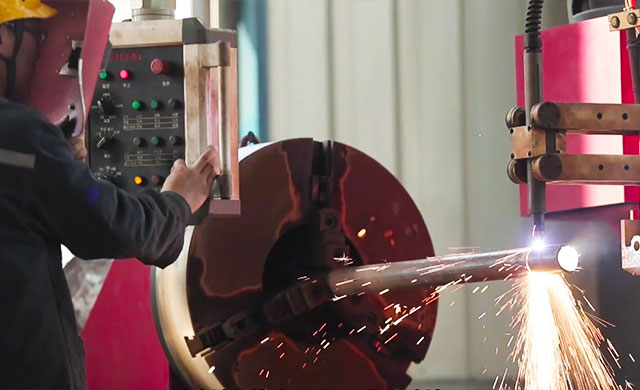
Nov . 10, 2024 08:47
Back to list
Gas Pressure Regulation with Efficient Reducing Valve Solutions for Optimal System Performance
Understanding Gas Pressure Reducing Valves Function, Importance, and Applications
Gas pressure reducing valves (PRVs) play a critical role in various industries by regulating the pressure of gases supplied from high-pressure sources to provide a stable and safe level of pressure necessary for equipment operation. These valves are essential for ensuring efficiency, safety, and adherence to necessary regulations when working with gases in any capacity. This article explores the function, importance, and applications of gas pressure reducing valves.
What is a Gas Pressure Reducing Valve?
A gas pressure reducing valve is a device designed to control and decrease the pressure of gas from a source (such as a storage tank or natural gas line) to a desired downstream level. The primary function of a PRV is to protect downstream equipment, maintain consistent pressure, and enhance operational safety. By automatically adjusting the pressure as demand increases or decreases, these valves ensure that specified operational parameters are met.
PRVs function by utilizing a diaphragm or piston mechanism that reacts to changes in downstream pressure. When the downstream pressure drops below the set point, the valve opens to allow more gas into the system. Conversely, if the downstream pressure exceeds the desired set point, the valve restricts the flow. Additionally, many PRVs come equipped with pressure gauges, allowing operators to monitor performance and make adjustments as needed.
Importance of Gas Pressure Reducing Valves
The importance of gas PRVs cannot be overstated. They contribute to the safe and efficient operation of systems that use gas, which can range from residential heating systems to large-scale industrial operations.
1. Safety High-pressure gas can be dangerous and can cause ruptures and explosions if not properly managed. Gas pressure reducing valves help prevent these catastrophic situations by maintaining pressure levels within safe limits.
2. Efficiency By ensuring that gas pressure remains at optimal levels, PRVs contribute to efficient operation. Overly high or low pressures can lead to inefficient combustion, wasting energy and increasing operational costs.
3. Equipment Protection Many pieces of equipment, such as burners, engines, and boilers, are designed to operate within specific pressure ranges. Gas PRVs protect these systems from pressure fluctuations that could cause damage or reduce their lifespan.
gas pressure reducing valve

4. Regulatory Compliance Industries dealing with gas must comply with various regulations that dictate safety and operational standards. Utilizing PRVs can help companies meet these legal requirements, thereby avoiding fines and enhancing overall regulatory compliance.
Applications of Gas Pressure Reducing Valves
Gas pressure reducing valves have a wide range of applications across different fields
- Residential Heating PRVs are commonly found in home heating systems that use natural gas. They regulate the pressure of gas entering furnaces and water heaters, ensuring safe and efficient operation.
- Industrial Processes Many industrial applications, such as chemical manufacturing, food processing, and fossil fuel extraction, require precise control of gas pressure. PRVs are integral to these processes, allowing for computerized control systems to maintain efficiency and safety.
- Gas Distribution Systems Natural gas distribution networks utilize PRVs to ensure that gas reaches consumers at the correct pressure. This is crucial for maintaining service reliability and customer safety.
- Medical Facilities In hospitals and laboratories, PRVs regulate the flow of gases used in various applications, including anesthesia and laboratory experiments, where precise gas delivery is crucial for patient safety and experimental integrity.
Conclusion
Gas pressure reducing valves are essential components in the safe and efficient use of gas across a variety of applications. Their ability to manage pressure fluctuations ensures that systems operate within safe parameters, protecting equipment, enhancing efficiency, and complying with regulatory standards. As gas usage continues to increase across numerous industries, the role of gas PRVs will remain pivotal in promoting safety and efficiency. Understanding their function and applications is crucial for anyone involved in industries that utilize gas, as it fosters a better appreciation of the importance of these devices in daily operations.
Latest news
-
Safety Valve Spring-Loaded Design Overpressure ProtectionNewsJul.25,2025
-
Precision Voltage Regulator AC5 Accuracy Grade PerformanceNewsJul.25,2025
-
Natural Gas Pressure Regulating Skid Industrial Pipeline ApplicationsNewsJul.25,2025
-
Natural Gas Filter Stainless Steel Mesh Element DesignNewsJul.25,2025
-
Gas Pressure Regulator Valve Direct-Acting Spring-Loaded DesignNewsJul.25,2025
-
Decompression Equipment Multi-Stage Heat Exchange System DesignNewsJul.25,2025

